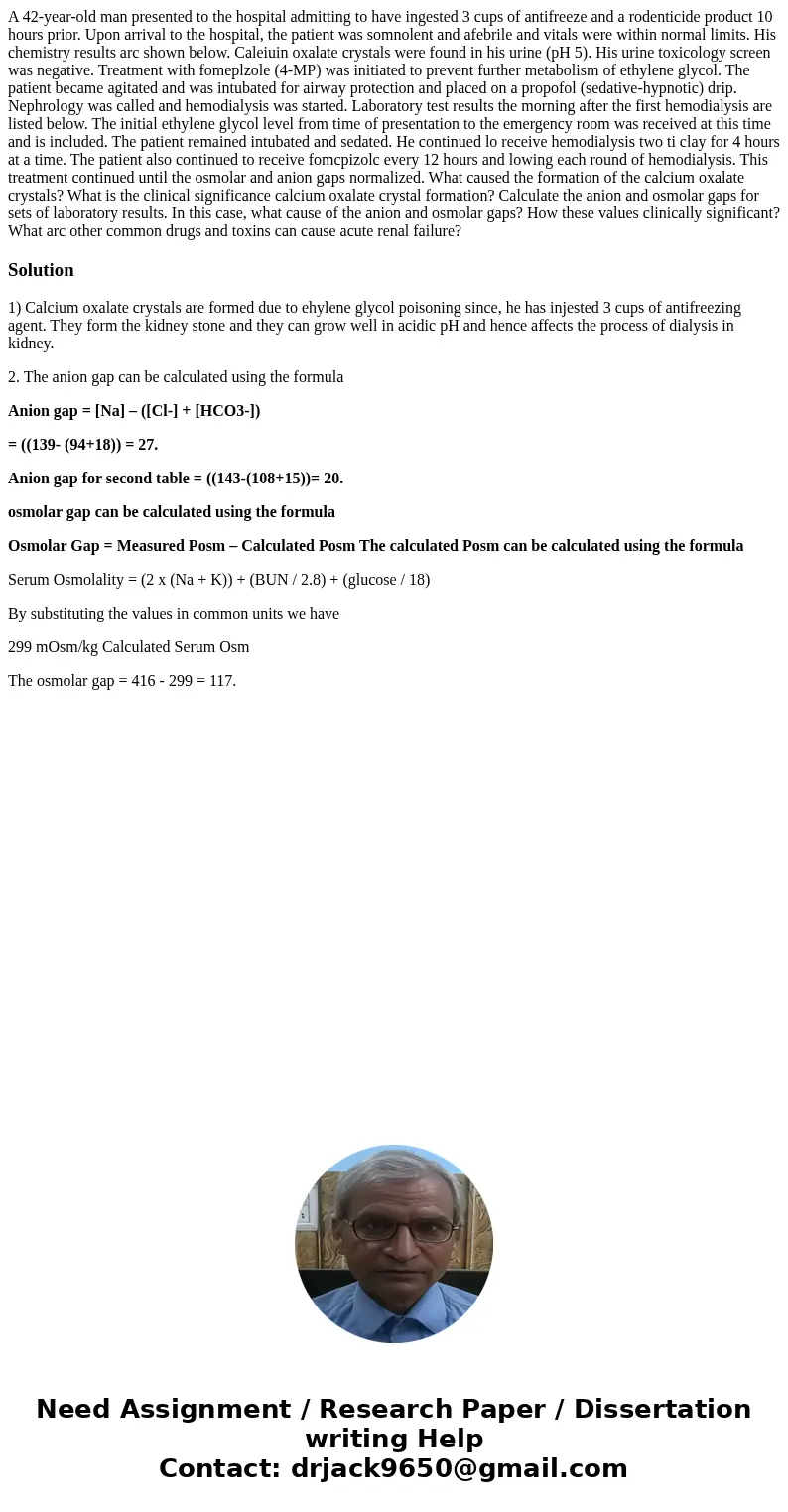A 42yearold man presented to the hospital admitting to have
A 42-year-old man presented to the hospital admitting to have ingested 3 cups of antifreeze and a rodenticide product 10 hours prior. Upon arrival to the hospital, the patient was somnolent and afebrile and vitals were within normal limits. His chemistry results arc shown below. Caleiuin oxalate crystals were found in his urine (pH 5). His urine toxicology screen was negative. Treatment with fomeplzole (4-MP) was initiated to prevent further metabolism of ethylene glycol. The patient became agitated and was intubated for airway protection and placed on a propofol (sedative-hypnotic) drip. Nephrology was called and hemodialysis was started. Laboratory test results the morning after the first hemodialysis are listed below. The initial ethylene glycol level from time of presentation to the emergency room was received at this time and is included. The patient remained intubated and sedated. He continued lo receive hemodialysis two ti clay for 4 hours at a time. The patient also continued to receive fomcpizolc every 12 hours and lowing each round of hemodialysis. This treatment continued until the osmolar and anion gaps normalized. What caused the formation of the calcium oxalate crystals? What is the clinical significance calcium oxalate crystal formation? Calculate the anion and osmolar gaps for sets of laboratory results. In this case, what cause of the anion and osmolar gaps? How these values clinically significant? What arc other common drugs and toxins can cause acute renal failure?
Solution
1) Calcium oxalate crystals are formed due to ehylene glycol poisoning since, he has injested 3 cups of antifreezing agent. They form the kidney stone and they can grow well in acidic pH and hence affects the process of dialysis in kidney.
2. The anion gap can be calculated using the formula
Anion gap = [Na] – ([Cl-] + [HCO3-])
= ((139- (94+18)) = 27.
Anion gap for second table = ((143-(108+15))= 20.
osmolar gap can be calculated using the formula
Osmolar Gap = Measured Posm – Calculated Posm The calculated Posm can be calculated using the formula
Serum Osmolality = (2 x (Na + K)) + (BUN / 2.8) + (glucose / 18)
By substituting the values in common units we have
299 mOsm/kg Calculated Serum Osm
The osmolar gap = 416 - 299 = 117.

 Homework Sourse
Homework Sourse